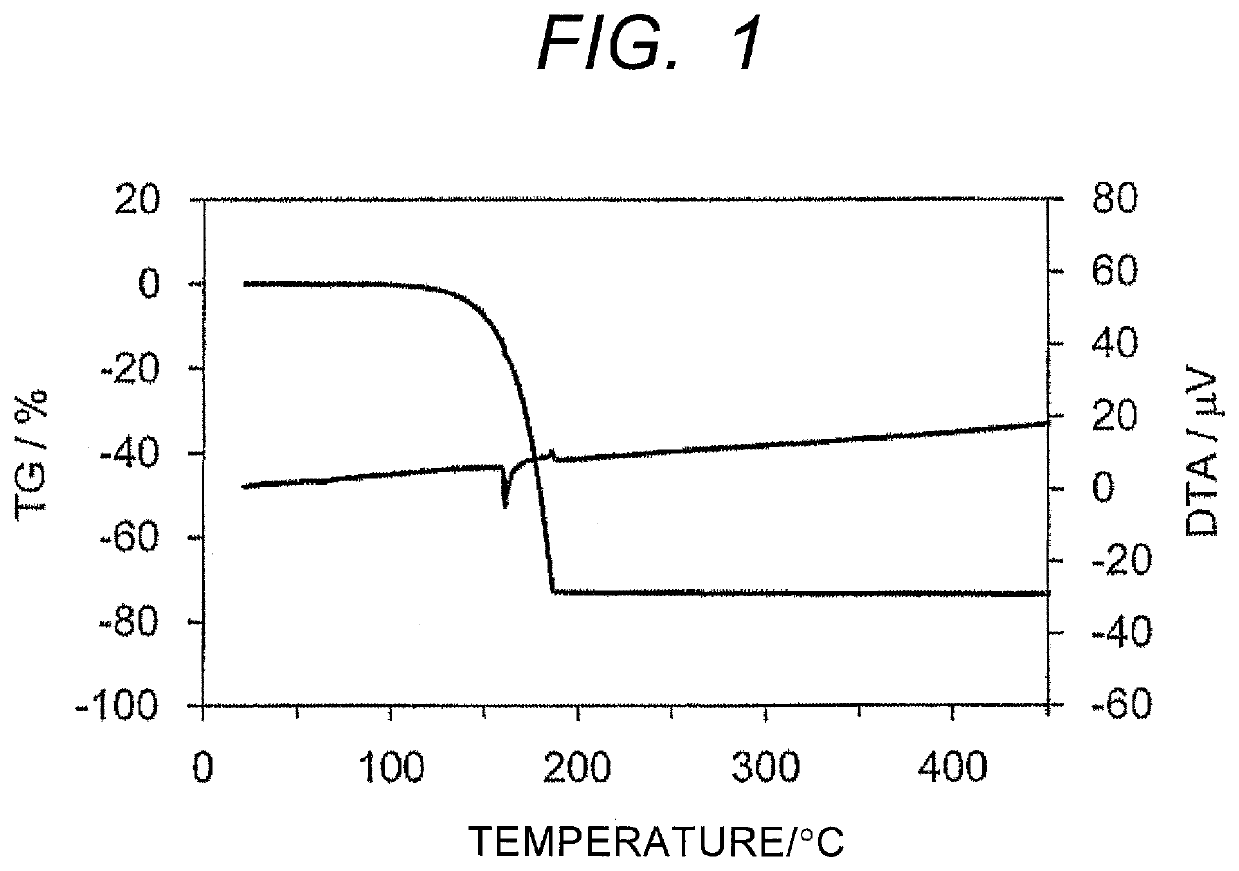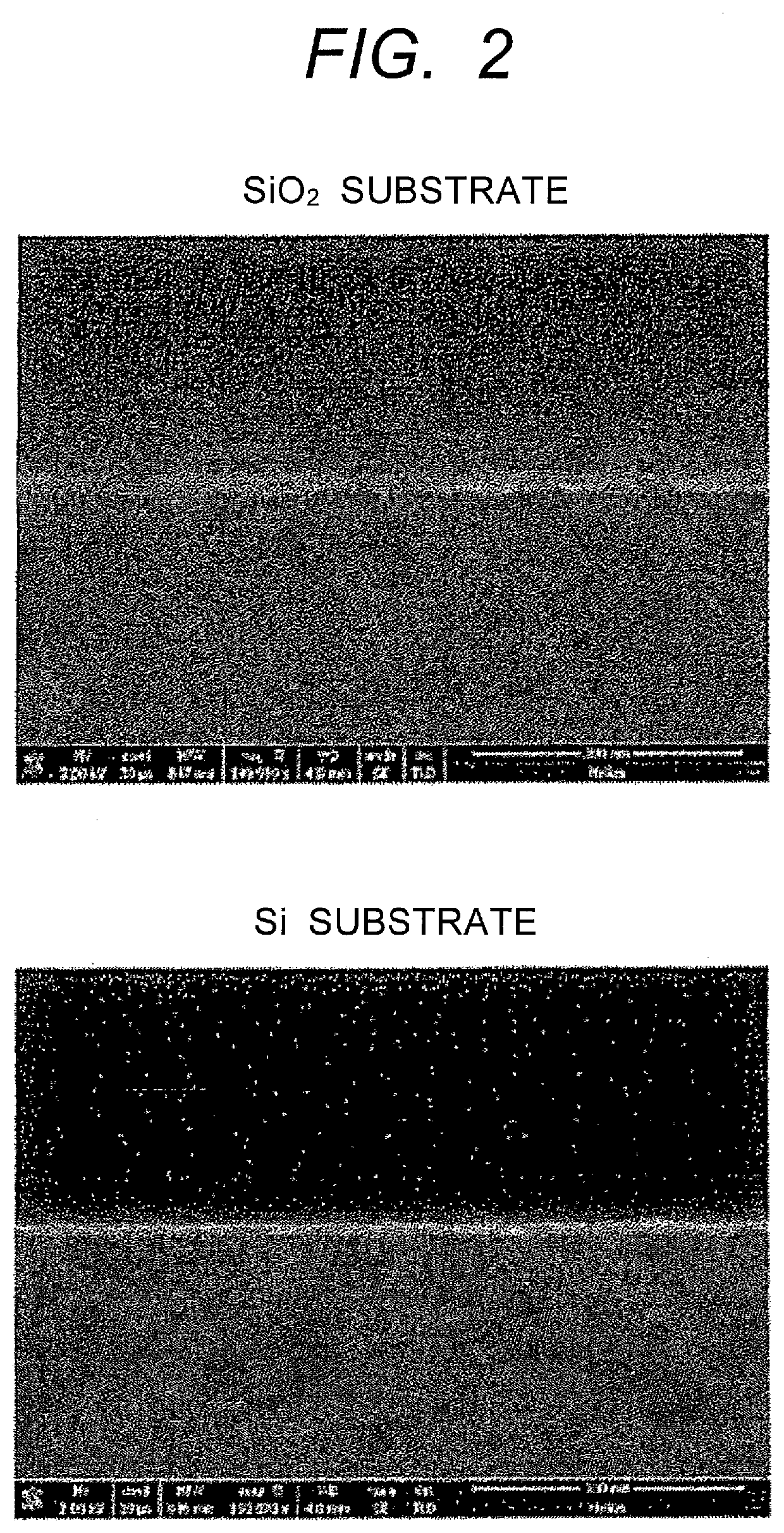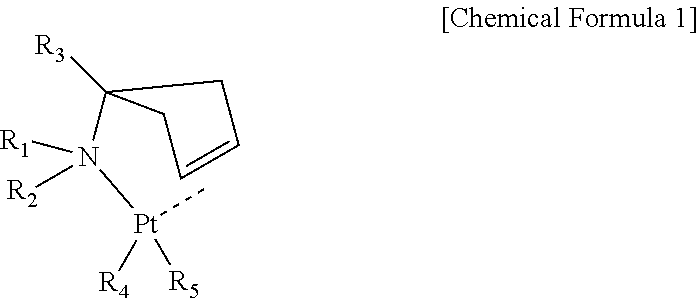Raw material for vapor deposition including organoplatinum compound and vapor deposition method using the raw material for vapor deposition
a technology of organoplatinum compound and raw material, which is applied in the direction of organic chemistry, coatings, and plating organic compounds, can solve the problems of unsuitable low-temperature film formation, high thermal stability, and inability to meet the performance requirements of organoplatinum compounds described above, and achieves moderate thermal stability and high vapor pressure.
- Summary
- Abstract
- Description
- Claims
- Application Information
AI Technical Summary
Benefits of technology
Problems solved by technology
Method used
Image
Examples
example 1
[0032]To a flask containing 90 ml of hexane, 1.62 g (14.6 mmol) of N,N-dimethyl-3-cyclopentene-1-amine and 1.78 g (5.8 mmol) of (1,5-hexadiene)dimethyl platinum were each added in this order and stirred at room temperature for 16 hours. After the completion of the reaction, the mixture was concentrated to give a white solid. The obtained white solid was sublimated and purified to give 1.68 g (5.0 mmol) of (N,N-dimethyl-3-cyclopentene-1-amine)dimethyl platinum, the desired product (yield: 86%). The synthesis reaction formula of the organoplatinum compound of Example 1 is as follows.
example 2
[0033]To a flask containing 50 ml of hexane, 0.27 g (3.3 mmol) of 3-cyclopentene-1-amine and 0.68 g (2.2 mmol) of (1,5-hexadiene)dimethyl platinum were each added in this order and stirred at room temperature for 3 hours. After the completion of the reaction, the mixture was concentrated to give a white solid. The obtained white solid was sublimated and purified to give 0.61 g (2.0 mmol) of (3-cyclopentene-1-amine)dimethyl platinum, the desired product (yield: 91%). The synthesis reaction formula of the organoplatinum compound of Example 2 is as follows.
example 3
[0034]To a flask containing 30 ml of hexane, 0.21 g (2.2 mmol) of N-methyl-3-cyclopentene-1-amine and 0.45 g (1.5 mmol) of (1,5-hexadiene)dimethyl platinum were each added in this order and stirred at room temperature for 15 hours. After the completion of the reaction, the mixture was concentrated to give a white solid. The obtained white solid was sublimated and purified to give 0.43 g (1.3 mmol) of dimethyl(N-methyl-3-cyclopentene-1-amine) platinum, the desired product (yield: 87%). The synthesis reaction formula of the organoplatinum compound of Example 3 is as follows.
PUM
| Property | Measurement | Unit |
|---|---|---|
| Temperature | aaaaa | aaaaa |
| Temperature | aaaaa | aaaaa |
| Temperature | aaaaa | aaaaa |
Abstract
Description
Claims
Application Information
 Login to View More
Login to View More - R&D
- Intellectual Property
- Life Sciences
- Materials
- Tech Scout
- Unparalleled Data Quality
- Higher Quality Content
- 60% Fewer Hallucinations
Browse by: Latest US Patents, China's latest patents, Technical Efficacy Thesaurus, Application Domain, Technology Topic, Popular Technical Reports.
© 2025 PatSnap. All rights reserved.Legal|Privacy policy|Modern Slavery Act Transparency Statement|Sitemap|About US| Contact US: help@patsnap.com



